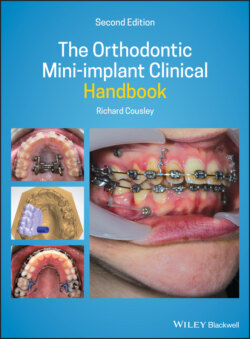Читать книгу The Orthodontic Mini-implant Clinical Handbook - Richard Cousley - Страница 38
2.5 Age
ОглавлениеWhile primary stability is readily achieved in adults, adolescent patients have a significantly higher mini‐implant failure rate in alveolar sites [47]. This is due to their reduced levels of cortical thickness and density [5,48,49] and higher rates of bone remodelling, which may compromise a mini‐implant in terms of both primary and secondary stability. In effect, immature cortical bone is less able to withstand force applications, especially during the first month after insertion. The risk of secondary failure, occurring during the healing phase when bone resorption processes predominate, appears to be much more critical in adolescents than adults because they have lower primary stability to begin with. It then only takes a small drop in bone support to reduce the total mini‐implant stability below the threshold for success. Therefore, whilst mini‐implants are still successful in adolescents, it is advisable to be cautious and use light loading forces (e.g. 50 g) for the first six weeks after insertion.
Alternatively, the midpalate may be a preferable insertion site in young patients, even if this means accepting the limitations of indirect anchorage, because of its high reported success rates in children [24].
Whilst mini‐implants are still successful in adolescents, it is advisable to be cautious and keep the loading force low (e.g. 50 g) for the initial six weeks.
